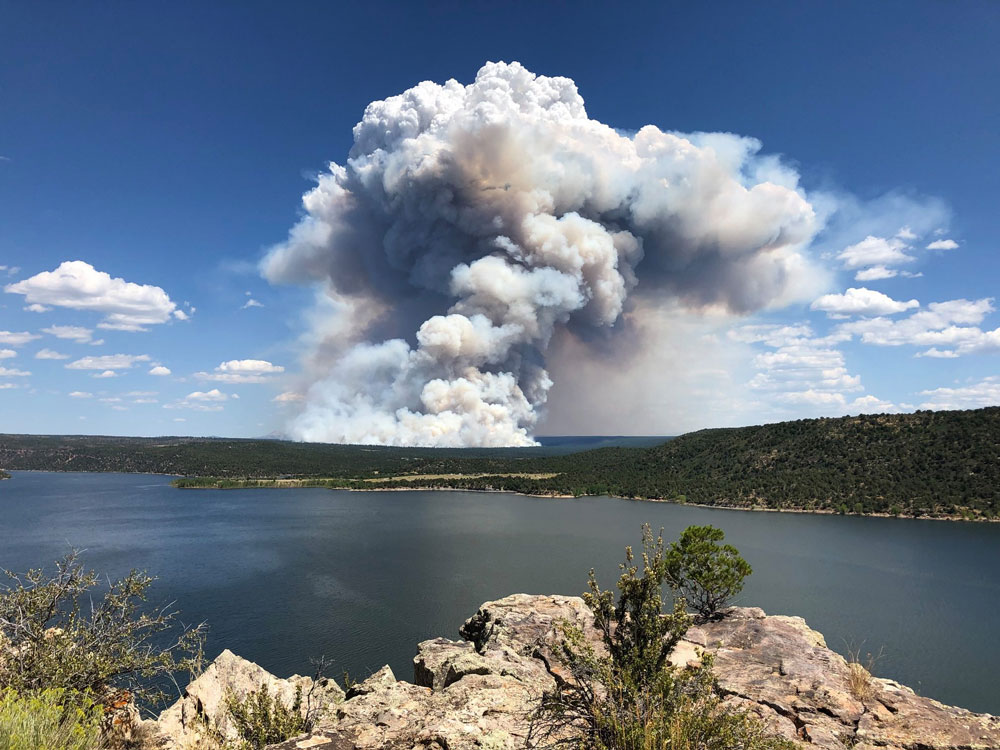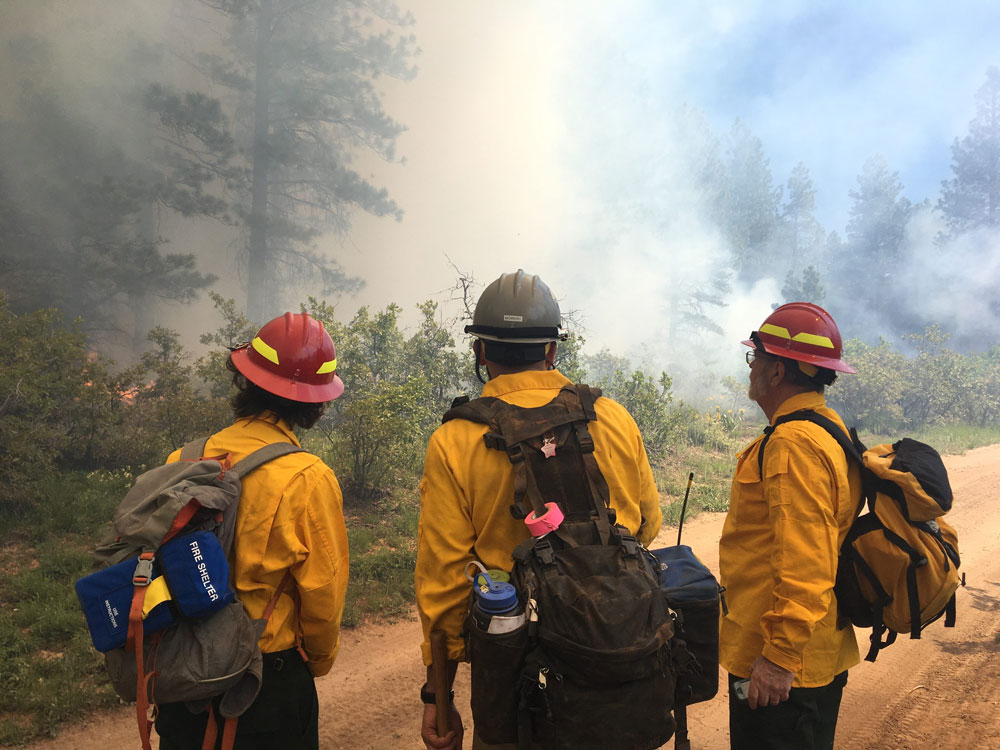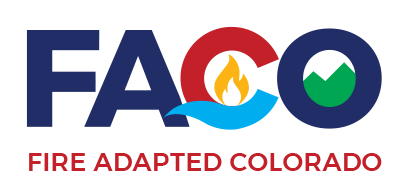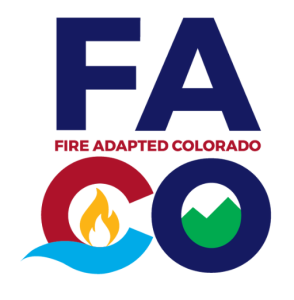Fulfilling The Burning Need To Engage More People In Prescribed Fire
Written by Alex Graf, Montezuma and Dolores County Coordinator, Wildfire Adapted Partnership

On two summer days this season, I joined a contingent of Wildfire Adapted Partnership (WAP), Dolores Watershed Resilient Forest
Collaborative (DWRF) and the Dolores Ranger District of the San Juan National Forest for a sneak peek at how our forest is successfully
implementing more broadcast burning than any other forest in Colorado. In 2019, the Dolores District strategically placed fire across more than 10,000 acres. To give local residents and other land and water managers a better understanding of what is happening on the ground when we start seeing columns of smoke in the air, the DWRF Coordinator and I decided to plan some tours in coordination with
the Forest Service.
These educational tours highlight the growing partnerships between various stakeholders in Southwest Colorado as we strive to create a closer, more resilient relationship with fire. We were geared up in full PPE, fire shelter included, and toured active prescribed broadcast burn activities for about 3-4 hours each day. For many, including myself, this was our first time wearing Nomex.
On these tours, community members got a first-hand look into the world of prescribed fire in a primarily ponderosa pine
ecosystem. Our WAP-DWRF participants learned about forest health, fire behavior and regimes, smoke research, and meteorology
directly from the professionals. We were connected with regional and national USFS officials and had the opportunity to ask questions related to real-time prescribed burns. From my perspective, these days were an invaluable opportunity to boost community adaptation and partnership (the A and P of WAP) efforts, namely through opening communication channels between the public and the USFS, as well as the multi-stakeholder, collaborative aspect of the tours.
Seeing a prescribed broadcast burn in a fire adapted forest in real-time connected the dots for many participants. So much of the world of fire science and adaptation is tied up in the theory, the models, the predictions, but here, we were able to see a synthesis of these theoretical notions in action. With the guidance of specially-assigned USFS tour leaders and Public Information Officiers (PIOs), we felt the heat and smelled the smoke, bearing witness to a return of much-needed ecological processes in this frequent-fire forest. Of course, safety was the first priority and the USFS diligently ensured all participants’ needs were met and that everyone felt safe from start to finish.
We watched as the multi-year process of implementing a prescription came to a head. They were inspiring days, giving us all a vision of what living with fire really looks like. We could see how years of thoughtful management, from vegetation thinning on the forest and adjacent
private land boundaries to a programmatic environmental assessment for prescribed fire in the ponderosa pine zone, had come together to enable much-needed fire on the landscape.

This was my first experience with helping organize a prescribed fire tour. I am hopeful that the foundation has been laid with our national forest to continue to build and develop the understanding of what it looks like to restore fire that is so crucial to wildfire adaptation on the broader Southwest Colorado landscape.
Prescribed Fire In Southwest Colorado
Southwest Colorado has had many other prescribed burn related events and workshops this summer. In addition to these two prescribed burn tours, the TREX program came to the San Juan National Forest, providing a unique training opportunity to local and national fire professionals. In coordination with the San Juan TREX, the Colorado Prescribed Fire Council came to Durango, CO in September to bring together practitioners and professionals for talks and a visit to a recently burned site. It is in the spirit of sharing, learning and community adaptation that the various organizations, stakeholders and collaborative groups will continue to bring prescribed fire education and implementation to Southwest Colorado. WAP hopes to continue and expand prescribed fire tour opportunities into the future as we work with our many partners to expand prescribed fire use!
About The Author
Alex Graf started as the Montezuma and Dolores County Coordinator with Wildfire Adapted Partnership (WAP) in April 2019. His duties mainly revolve around working with residents on community resilience and wildfire preparedness. He runs Wildfire Adapted’s Neighborhood Ambassador Program and supports small and large cost-share projects in his counties. Recognizing extremes in wildfire behavior all across the West, adaptation is something that Alex feels called to address before disastrous wildfires strike where he lives and works. Each community is unique and there is no one-size-fits-all method. In his first season on the job, Alex has added cross-boundary educational work around prescribed fire to the “diversity of tactics” approach that he is cultivating to promote community adaptation in southwest Colorado. This is important with many of the subdivisions he works with residing on the boundary of the Forest that is implementing the most prescribed fire in the state.

